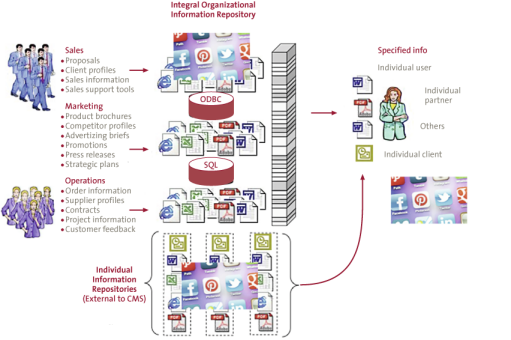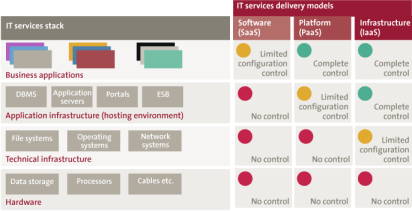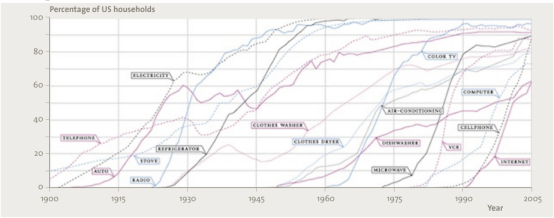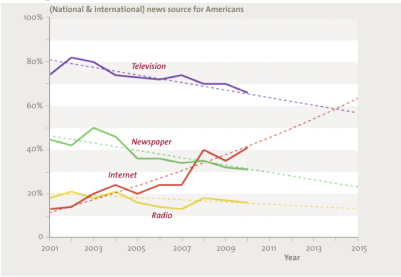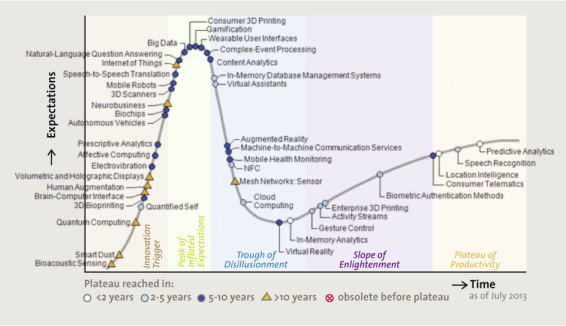The significance of the impact of IT for organizations around the world, especially in light of a very slow recovery from the global financial crisis and the introduction of significant new technologies, has amplified the need to provide a better understanding of the specific geographic similarities and differences in IT managerial and technical trends. Identifying these influential factors is one thing; this paper also looks at the challenges in addressing them, taking into account both local responsiveness and global pressures. By comparing and contrasting IT trends from different continents, this paper presents important local and international considerations, including management concerns and influential technologies. In addition, five mega-trends have been identified that will help prepare IT and non-IT leaders for the challenges that await them. The IT trends also serve as a barometer as the respective continents address their difficult economic environments. The paper also provides a perspective on IT considerations for the future.
Introduction
This paper is based on 35 years of surveys by the Society of Information Management (SIM) (U.S.), 19 years of IT Trends surveys (E.U.) and now 4 years of Global IT management concerns and IT Trends research.
The research is based on data from five geographic regions: the United States, Europe, Asia, Australia, and Latin America. The top five management concerns found are:
- Business Productivity & cost reduction
- Business & IT alignment / integration / fusion
- Business Agility & speed to market
- Business process management/reengineering
- IT cost reduction
The five most influential technologies are:
- Business intelligence
- Cloud Computing
- Enterprise resource planning (ERP)
- Apps developments
- Customer Relationship Management (CRM)
Overall, while the economic climate is improving at different rates around the globe, albeit at a slower pace than anticipated, IT’s role continues to evolve as it provides organizations with a fundamental vehicle for reducing business expenses, and new opportunities for increasing revenues.
This paper begins with the mega-trends (part 1), then discusses the results of the trends research (part 2, the 2013/2014[The 2013 survey is currently running and available via: http://www.surveymonkey.com/s/9BDDB8T] survey is currently open). Part 2 discusses possible future perspectives.
1. Mega-trends
New technologies such as social media, Cloud, analytics/big data, smart devices (phone, tablet, watch, glasses), and cyber security form the foundation of the major transformation that organizations are experiencing. While there are other technologies of the future, discussed at the end of this paper, these emerging technologies will speed up the fundamental mega-trends. There are five mega-trends that can be identified.
Mega-trend 1: Centralized control/power will disappear
Partly due to the economic crisis, but mainly due to the introduction of new technologies, people are choosing to “work for themselves” and offer their services to multiple companies or start a business of their own; the “wiki style” virtual organization is on the rise. On top of that, social media is facilitating the growing disapproval of the high salaries of large-cap executives (e.g., CEO’s); do their contributions merit their income? Today many CEO’s are less trusted by people than in the past, whereas subject matter experts (SMEs; including academics) are trusted and valued more. The real power is more often found with these SMEs than with CEO’s or government officials (see Figure 1).
Figure 1. Central power is gone (source: Edelman Trustbarometer). [Click on the image for a larger image]
The worldwide insights and transparency brought by technologies such as business analytics, mobile, Cloud, and social media is very high. Knowledge and knowhow are increasingly more important (and accessible, especially via the Cloud), whereas organizational hierarchies are becoming less important. SMEs are the ones benefiting from these technology developments that form a mega-trend in which centralized power (hierarchy) is declining. These changes are exemplified in the IT trends research which indicates that through growth in outsourcing, increase in time CIOs devote to partnerships with other business and service providers, and use of IT, that organizations are becoming more federated.
Mega-trend 2: The number and quality of connections grows in importance
Metcalfe’s law whereby “the value of a network is determined by the number of participants” continues to drive mega-trend 1. With the transparency of Cloud and social media, and the growing accessibility of knowledge, the number and quality of individual and organizational connections will continue to gain importance. The thought that “knowledge is power” (Figure 2) is becoming less important; the number of connections multiplied by the quality of the connections is the driver of power.

Figure 2. Knowledge is power is outdated (source: Wilkinson, 2008).
In the trends research (see the top five technology IT Trends) the growth of Cloud, social media, business analytics, and “App development” supporting smart/mobile devices are indicative of this mega-trend.
Social media running on Clouds has become increasingly more important for managing these connections. Social media channels such as LinkedIn, Twitter, Facebook and Instagram are being used around the clock. There are currently 140 million tweets posted daily and six billion videos are being watched monthly via YouTube (sources: Twitter.com and YouTube.com); making social media the number one online activity. (Figure 3).
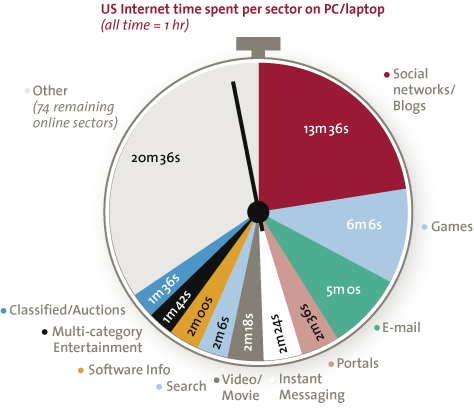
Figure 3. U.S. Internet time spent (source: Nielsen, 2010).
Mega-trend 3: Learn how to leverage Big Data and Business Analytics
Does big data enable/drive big decisions? The current business analytics trend is fundamental considering the enormous amounts of data gathered via existing and emerging technologies; but it also questionable how to work with these large amounts of data and if having too much data inhibits organizations and people from focusing on realizing their goals. Organizations are getting lost in the enormous amount of data that continues to be available/accessible. Frequently, less is more and the need to focus is most important (either on the bigger picture or on the details). More (big) data can mean less insight. For organizations it is the question of how to work effectively with the enormous amount of data, and the ability to leverage analytics tools has become fundamental. Getting this information (see Figure 4) is an important question for business & IT, however, how to extract the insights is the challenge and possibly one of the major alignment obstacles. IT and business must work together as they leverage these emerging analytics tools to quickly provide the important insights. Business Intelligence/Analytics has been ranked the number one technology for the last 10 years; organizations continue to struggle with how to obtain real value from this critical asset.
Figure 4. Working smart with information overload (source: Derksen, 2012). [Click on the image for a larger image]
Mega-trend 4: Life is in the Cloud
The trend is that everyone is (or will soon be) online; working online, purchasing online, selling online, communicating online, all creating and consuming data hundreds of times each day. These activities are enabled by Cloud-based computing. Everything, which can become digitalized, will be digitalized and delivered via the Cloud. Most organizations are using Cloud or Cloud technology, as we see the percentage of IT budget allocated to both internal and external Cloud on the rise (Luftman, 2012).
We are moving from handheld PDAs to Smart Glasses and Watches using voice (no keyboards). These new technologies use the Cloud to provide more data to make better choices regarding things like traffic (the best routes), in-store recommendations, personal healthcare monitoring, and where your friends are.
Another significant example, as illustrated with mega-trend 2, is the ability of Cloud to facilitate virtual/wiki-style network organizations.
A final example is the ability of smaller companies, which in the past could not afford complex new technologies, to now have access (via Cloud services) to the same technologies as their larger competitors. This will enable these smaller organizations to grow, while producing new competition for the larger firms.
Figure 5. Cloud architecture outside the organization. [Click on the image for a larger image]
While many perceive the biggest worry to be security/cybercrime, typically Cloud service providers tend to provide a more secure environment than non-Cloud providers.
Secondly, a bigger concern is technology integration (e.g., how to integrate the Cloud tool used by the sales department with the Enterprise Resource Planning system) across the organization.
Another important consideration is how to standardize and leverage organizational business processes. Life in the Cloud is also about considering the control that an organization requires. Using the current Cloud architecture of SaaS, PaaS and IaaS (Figure 5), the control is more or less outside the organization.
While there are many technical and non-technical considerations, it is clear that the Cloud will provide the infrastructure of the future.
Mega-trend 5: business predictability is decreasing while business impact is increasing
Just a few years ago Microsoft and Nokia were the most influential companies for software and mobile phones worldwide; today the big influencers are Apple, Google, Facebook and Samsung. In 2007 not many people would have predicted that Apple would grow to become the largest company (based on stock value), but it did, as a result of the iPhone and iPad. Predictability is becoming more complex, while competitors emerge from unexpected areas, especially as smaller companies leverage new technologies via the Cloud. For example, Spotify.com in just five years transformed the music industry significantly, not by having the music but just by listening to it. Considering the speed in which new technologies are introduced and adopted, this is but one example. The speed of introducing new technologies is increasing (Figure 6). Smartphones have only been within our grasp for scant years, and soon today’s tablet will be replaced by smart watches and glasses.
Figure 6. Consumption Spreads Faster Today (New York Times, Nicholas Felton, 2005). [Click on the image for a larger image]
The impact of these new technologies is driving corporate and personal changes; albeit how these emerging technologies will be used and how they will evolve is often difficult to anticipate/predict. What is clear is that the message of Carr (2003) that “IT doesn’t matter” is passé; albeit how organizations deploy IT is transformational. IT does matter, and it is determining the way organizations are doing business today and in the future (see part 3 in this paper). There is no end in sight.
2. The dynamic business and technical environments have a significant impact on organizations
Each year the changes affecting IT are identified and assessed using a global survey in the 3rd and 4 rd. quarter. Currently the research for 2013/2014 is underway[The 2013 survey is currently running and available via: http://www.surveymonkey.com/s/9BDDB8T]. In the most recent survey, senior IT executives from almost 1,000 organizations located in the United States, Europe, Asia, and Latin America responded. While the December 2012 issue of MISQE presented the results of the U.S. data, the April 2013 research report of CIONet presented the European data, and the Journal of IT (JIT) December 2013 presents the global results, this paper focuses on trends and future forecasts.
The five categories used in the last survey are:
- Management Trends
- Application and Technology Trends
- IT Budget Allocation Trends
- IT Organizational trends
- CIO Trends
This paper discusses the management and technology trends. The top five management concerns across geographic regions were aggregated to provide the global top ten management concerns. The global top ten management concerns along with the respective ranking and trends for each of the items in the various geographic regions are presented in 1. These considerations and trends are elaborated on throughout this paper.
Similarly, the top five applications and technologies were aggregated to provide a list of the global top five applications and technologies along with their trends. The global list is presented hereafter and elaborated on in this paper.
Top Five IT Management Trends
The top 5 management concerns tend to evolve slowly, except for concerns such as IT cost reduction, which appears to be directly related to each region’s current and anticipated economic performance. Despite the prevailing global economic conditions, management considerations such as IT and business alignment, and business agility and speed to market are both globally and locally the consistent top 3 management concerns.
Interestingly, IT cost reduction remained a more important IT concern in Europe than in all other geographic regions. This has now been the case for the last three years and is a result of the ongoing economic turmoil that has plagued Europe. A second reason is the budget control focus of Western European organizations, which are well represented in the European part of the survey. Most of these organizations are focusing more on IT costs than return on IT investments.
Table 1. Top IT Management Concerns.
| IT Management concerns | 2012 / 2013 | 2011 | 2010 | 2009 | 2008 | 2007 |
|---|---|---|---|---|---|---|
| Bus, productivity& cost reduction | 1 | 4 | 1 | 1 | 7 | 4 |
| IT and business alignment | 2 | 1 | 3 | 2 | 1 | 2 |
| Business agility & speed to market | 3 | 2 | 2 | 3 | 13 | 17 |
| Business Process Reengineer | 4 | 3 | 3 | 4 | 18 | 15 |
| IT cost reduction | 5 | 10 | 8 | 5 | 7 | 4 |
1. Business productivity and cost reduction
Business productivity and cost reduction has been ranked as one of the top three management concerns since the global economic downturn, and it appears as the top concern in all geographic regions except for Latin America and Asia, where it is still ranked very highly: 2nd and 3rd respectively.
While there is a general consensus on the importance of business productivity and cost reduction using IT, IT itself is still largely perceived as an expense within many companies. This is demonstrated by the continued appearance of IT cost reduction as one of the top ten management concerns. However, as noted in our report last year, this economic downturn has most organizations leveraging IT to reduce business expense more than merely reducing IT expenses. This year’s data clearly shows this by having business productivity and cost reduction as well as business and IT alignment ranked higher (in all geographies) than IT cost reduction. This is, in concert with an increasing focus on leveraging IT for revenue generating initiatives (discussed later), is very different from previous economic downturns.
2. Business and IT alignment
Despite being a top concern of IT managers for over 30 years and appearing in the top ten constantly, alignment of IT and business remains an ultimate but elusive goal. After climbing to the top spot in 2011, compared to the 2nd spot in 2010, it once again appears in 2nd place . In all of the geographic regions, IT and business alignment ranks in the top ten management concerns; ranking 2nd in the U.S. and Europe, 1st in Latin America, and 6thand 4thin Asia and Australia, respectively.
IT and business leaders continue to see IT as an integral driver/enabler of efficiency/effectiveness throughout the business. They therefore focus on initiatives that enhance the maturity of alignment between IT and business . As CEOs and other business executives require direct support from CIOs to deliver demonstrable value , it is not surprising to see, once again, alignment of business and IT as one of the top three management concerns.
3. Business agility and speed to market
Business agility and speed to market are essential for business growth in a competitive economy. This is especially true in this slow recovery from recession, demonstrated by the continued high ranking of business agility and speed to market. This management concern gained importance during the recession period; agility and speed to market were outside the top ten repeatedly before the recession, and they have come up in the top five from 2009 to today.
4. Business process management and reengineering
Business process management (BPM) and business process reengineering (BPR) are ranked in the list of top ten concerns in all of the geographic regions (ranked 7th in the U.S., 6th in both Europe and Latin America, 3rd in Australia, and taking top spot in Asia). This should not be surprising in that BPM/BPR is a fundamental vehicle for leveraging IT to reduce business expenses. Interestingly, BPM/BPR gained importance during the recession period as did business agility and speed to market. This management concern was outside the top ten in the pre-recession period, and ranked 18th in 2008. In the period 2009 up to today, it ranked in the top five on a global scale.
5. IT Cost Reduction
IT cost reduction re-enters the top-ten list of concerns for IT managers. Considering the longer-than-expected economic sluggishness in the U.S. and Europe, it is understandable that the importance of IT cost reduction is higher in these geographic regions, while it was ranked 5th and 4th in the U.S. and Europe, respectively.
Top Five Technology IT Trends
Survey respondents were asked to rank the importance of applications and technology developments by selecting their top five from a list of 51. Table 2 lists the top five application and technology rankings for 2012/2013 across the geographic regions. Similar to last year’s results, some of the top five applications and technologies, such as business intelligence, are identified in the top 5 across all the geographic regions, while the ranking of some others, such as Cloud computing, vary greatly across the geographic regions. This is indicative of the different cultural, technological, infrastructure, and human resource variation in those areas. The top five applications and technologies are discussed below with comparisons across the surveyed regions.
Table 2. Top Application and Technology Development.
| Application and Technology Development | 2012 / 2013 (WW) | 2011 | 2010 | 2009 | 2008 |
|---|---|---|---|---|---|
| Business intelligence | 1 | 1 | 1 | 1 | 2 |
| Cloud Computing (SaaS, PaaS, IaaS) | 2 | 2 | 5 | 17 | |
| Enterprise resource planning (ERP) | 3 | 3 | 3 | 3 | 14 |
| Apps developments | 4 | ||||
| Customer relationship management (CRM) | 5 | 5 | 9 | 13 |
1. Business intelligence
Business Intelligence remains the top technology investment in 2012. This is the fourth consecutive year that it is ranked 1st globally . It has been ranking the highest in the U.S. every year since 2003, and in Europe since 2010. It is now also ranked as No. 1 in Australia and in Latin America as well. The only geographic region that registered a reduction in the importance of this IT technology was in Asia, where it moved from the 1st place in 2010 to the 2nd in 2011 and to the 5thplace in 2012.
Global high ranking of this technology is showing, yet again, that since business intelligence leverages data mining to identify valuable insight, IT leaders still believe their organizations are data rich and insight poor . In addition, recognizing the set of skills (e.g., data management, programming, statistics, tools, and industry/company) required to successfully leverage this technology, along with the limited number of candidates possessing these skills, is driving its persistently high ranking. The ranking of Business Intelligence seems to be independent of the recession, since BI has been number 1 or 2 since 2003.
2. Cloud Computing
Cloud Computing improved its global rank from the 3rdin 2011 to the 2nd place in 2012. It is, however, very interesting that it has plummeted to the 8th spot in Asia and has moved well outside of the top ten in Latin America. This seems to mirror its ranking in Europe last year, when it dropped to the 8th place compared to the previous year when it occupied the top spot. The implications of Cloud computing are yet to be fully understood, and the slow pace of recovery in the U.S. and the economic volatility in Europe has forced Asian IT managers to look in their immediate organizational vicinity for certainty, where applications and technologies such as knowledge management, apps development, CRM, and BPR ranked higher than Cloud computing (intriguingly analogous to the relative rankings in Europe last year). As a new generation of skilled labor enters the workforce in Asia, they may bring with them the added value of flexibility, and therefore afford to Asian CIOs the ability to have employees focus more on unique internal initiatives brought about with the Cloud rather than the Cloud itself.
What seems to be happening is that some organizations, regardless of geography, are just thinking about Cloud and its implications, while others are piloting less complex services, and others are embarking on migrating “more important” services; some in-house and others outsourced. Again, Cloud is relatively new, and the challenge would seem to be for client organizations to work with their business partners to understand how best to proceed (Willcocks and Lacity, 2012). As previously mentioned, the Cloud will provide the dominant infrastructure for future IT initiatives.
In addition to the Cloud being a focus of future initiatives, Cloud development is an important basis for Apps (see trend 4). In 2014 the Internet will (in Western world) have a larger public reach/use than television does (Figure 7, American example). The impact on marketing budgets will be to significantly shift from traditional media to the new media (marketingcharts.com), with Google as one of the big recipients of these marketing monies. Marketing budgets will include further investments in Internet resources such as Google, Twitter and LinkedIn, and in suppliers such as Apple, Samsung and the gaming industry. An interesting example is LEGO, having reinvented itself in the last few years and growing 25% last year. The online marketing budget is growing fastest in supporting its own website (LEGO.com), which attracts already about twenty million visitors each year.
With the introduction of Google Glass in 2014, together with the fast public acceptance of the Smart Watch, the social marketing budget will pass the television-related marketing budget. For organizations, Google Glass and Smart Watch will demand extra investment on Bring Your Own Device, Apps and security and privacy issues, but will also offer new possibilities. For example, in the Netherlands a hospital is already experimenting with Google Glass during surgery. Starting in 2014 new possibilities will emerge in multiple sectors looking at the possibilities of Smart Glass. Organizations need to adopt Smart Glasses in their policies and adopt this trend in the core processes. This will start with some activities (such as during surgery), but Smart Glasses will increasingly be part of a chain of activities while the number of functionalities will increase.
Figure 7. Americans get most of their news (source: futuretimeline.net). [Click on the image for a larger image]
Another interesting development will be the possibility of getting your personal DNA sequence for less than $100. Besides being nice to have for consumers, this data will be especially helpful for insurance companies (next to the other Big Data) for forecasting the costs they will expend on insured clients. Again, privacy and security will be high on the management agenda.
3. Enterprise Resource Planning (ERP) systems
Leveraging IT to reduce business expenses and BPM/BPR as a management concern will continue to rank highly, as has been the case for the past few years. They drive the associated applications and technologies such as Enterprise Resource Planning (ERP) and Customer Relationship Management (CRM). ERP ranked 3rd globally this year (one lower than last year and the same ranking it has enjoyed in the U.S. since 2010). In other geographic regions the ranking was mixed. It was lower in Europe and Latin America (4th from the 2nd and 2nd from the 1st, respectively) and it was higher in Asia (4th from the 7th).
4. Apps development
Application (apps) development covers a whole computing platform as a service across computer networks. With pervasive mobile devices (and Bring Your Own Device – BYOD), apps development goes hand-in-hand with Cloud computing and can greatly benefit from it.
Apps development is a new entrant to the top 5 IT applications and technologies this year, having been ranked No. 3 in Europe and No. 7 in Asia, making it globally 4th overall. Apps development still seems not to be on the radar in Latin America (9th), the U.S. (ranked 11th), and Australia (22nd). With all indicators pointing to a growing proportion of smartphones in all geographic regions, and a rapidly increasing proportion of staff and clients wishing to access relevant data remotely, the pressure is on IT departments to develop applications allowing such access. We envisage apps development will be one of the issues keeping many IT managers awake at night over the next couple of years. The support of BYOD is likely impacting the speed for apps deployment around the globe. With the introduction of new technologies such as smart glasses and watches, it is expected that the use of apps will continue to rise.
5. Customer relationship management (CRM)
Customer relationship management (CRM) tools are ranked in the 5thplace globally and in Europe. This is the same position it has been ranked in in the U.S. since 2010.
CRM was on the list of top ten technologies in Latin America last year, but this year it has plummeted to number 20. CRM remains a relative newcomer in that region, and the same issues as discussed last year still hinder its wide adoption. A main issue remains the lack of well-established data warehouses, which limits mass adoption of tools that require detailed historical data. As with ERP, CRM gained importance during the recession period. Prerecession CRM was ranked outside the top five whereas since 2011 CRM has ranked in fifth place.
Additional Future Perspectives
In this part a possible future perspective is provided. In the period 2015 up to 2020 the use of Virtual Reality will increase. The vision of virtual reality began in the 70s and 80s, mostly in books and games/amusements. Current VR environments are more VR experiences using a computer-simulated environment, such as flight simulators, which have been around since the 80s. By 2020, based on the speed of technology, we will see the first real VR games using a future version of Google Glass (or a competitor). Currently games only take into account a few aspects of reality; in 2020 a gamer will be able to combine his physical reality with virtual reality. A technology development, which also will help in realizing VR-glasses, is batteries. The current batteries people use in smartphones will last ten times longer and be recharged 10 times faster before the end of this decade. Also interesting will be that consumers will be able to print out a lot of their desired products (such as new sunglass frames, cups, etc.), when 3D printer devices will be at prices in range of consumers.
Within the timeline 2020 to 2030, the Internet will surpass five billion users, and in the same period, the 5G bandwidth will be available for smartphone users. With 5G bandwidth, the Internet of Things will entering the plateau of productivity (Figure 8: source Gartner). Today’s text writers will largely be replaced by a new trend in this decade, a trend called “texting by thinking” in which thoughts can be put on the screen instantly and automatically; this will change our way of working. Having thoughts go directly to text will increase productivity but also provide better thinking methods. Another future technology trend will be having net energy use monitored intelligently in western countries, and most households will have a smart meter at home managing the energy down- and upload as well as indirectly controlling machinery such as the refrigerator and microwave. Major issues will continue to arise in security and privacy, while access to Google (or competitors’) glass information cannot be limited to the user but will be accessible to government and commercial parties. Next to the Smart Glass information, a hundred thousand drones will fly constantly to serve our safety but can also be used to follow people at each step they make, driving extra information next to that from Smart Glass. Interestingly the gaming industry is the biggest industry in this decade, with real-life gaming experiences using VR and even Artificial Intelligence (AI). The current search engines such as Google and Bing will be replaced by AI search bots residing in the background options within the games and smart (VR) glasses.
Figure 8. Gartner Hype cycle (source Gartner, July 2013). [Click on the image for a larger image]
Over about the next thirty years, most of our cars will become plug-in electric. In this decade (2030-2040) AI will also be in common use within organizations and will be responsible for tasks completely different from those it performed in 2013. These new job descriptions will be related to handling the enormous amounts of data (Big Graveyard Data Handler) as well as managing a consequent image via all “social media” channels, while Twitter will become things like winks (e.g., how many times your eyes responded to a message in the Smart Glass). Business and IT Alignment (today’s top 3 management concern) will be about aligning those business parts that are today assumed not to be supported by IT, to the whole of IT throughout the world using smart sensors, drones and other technology available to everyone. The current highly IT-supported business processes are all digitalized IT events having no human interaction. The government role will have changed to managing digital streams in order to have an equal, level playing field and guarantee a good level of security.
When looking at the trends and possibilities in the years up to 2040, some bullet-worthy predictions are:
- Cost of everything related to IT will improve by two orders of magnitude
- No more wires or cables; WiMax available everywhere with “cloud computing” (virtual machines & ultra thin client)
- No more keyboards; Virtual & eyeglass displays, & natural language
- International & interplanetary access is universal
- Interactive multidimensional surfaces (e.g., holographic, VR intelligent suits, glasses, watches) as primary I/O vehicle
- Sensors with the ability to take action will be everywhere
- Collaborative Smart Devices (K sharing, purchasing, services, entertainment, personal help & search engines) will surpass face-to-face interaction; Wiki World & Crowd computing
- Using cash & checks will be gone
- Reusable intentional SW engineering tools will dramatically improve AD/M
- Autonomous mobile robots will be common
- Security, spam will be only a small concern
- Technology integration will have improved
Summary
As a result of the prolonged global financial uncertainty, IT cost reduction has returned to the top ten global management concerns. This management concern had been pushed outside the top ten management concerns last year as the prospect of an end to the global financial crisis was perceived to be just over the horizon – something that has become more elusive. Furthermore, business productivity and cost reduction have moved to the top position across all geographic regions except for Latin America, signifying that organizations are more interested in utilizing IT to increase productivity and reduce the cost of doing business as well as focusing on the reduction of IT costs. We also see the appearance of organizations starting to leverage IT to increase revenues.
There are clear signs of improvements in IT budgets and spending, with a steady progression towards, and in some cases even exceeding, pre-recession levels.
The pace of recovery from the recession is indeed sluggish, but it does vary greatly in different geographic regions, as each area has its own set of characteristics and therefore varying management concerns and responses are observable. As highlighted in last year’s research, unique characteristics of local markets influence management responses of enterprises operating in a globally linked environment. By comparing and contrasting different geographies, this research has identified the many similarities and dissimilarities that confront managers.
In closing, it is important to point out that IT managers are working in a highly inter-connected world, and therefore certain patterns span different geographic locations. However, this research found that while there are many similarities there are also important local trends that managers must be sensitive to. In fact, in some regions such as Europe, local considerations are so prevalent that they have taken precedent over global influence and interconnectedness. Overall, IT continues to evolve in its importance to organizations of all sizes, in every industry, around the globe.
The authors envision extending the survey’s participation to all geographic regions, and welcome proposals to assist in obtaining additional data.
Finally, the authors provided a brief vision of the future. One conclusion can be drawn: IT Does Matter today and for the foreseeable future; in fact, the impact of IT on business will continue to grow exponentially.
References
Airline Business (2009). “IT SURVEY.” Airline Business 25(9): 8.
APEC. (2011). “(APEC) Leaders’ Declaration, The Honolulu Declaration – Toward a Seamless Regional Economy.” Retrieved 11 January 2012.
Baker, C. (2006). “IT trends survey 2006.” Airline Business 22(7): 42.
DarkNet.org.uk. (2010). “WikiLeaks Attacks Cause Rival DDoS Retaliation.” Retrieved 18 December 2010, from http://www.darknet.org.uk/2010/12/wikileaks-attacks-cause-rival-ddos-retaliation/.
Dutta, S. and I. Mia. (2011). “The Global Information Technology Report 2010–2011.” Retrieved 7 February 2012, from http://reports.weforum.org/global-information-technology-report/.
Eul, M., A. Freyberg and R. Jaeger (2010). “IT in the Telecom Industry: Reaching the Next Level.” AT Kearney.
Herlihy, J. and C. A. Ptak (1997). “IT trends: IBM/APICS survey focuses on automated manufacturing ” Materials Management and Distribution 42(11): 22.
Hinssen, P. (2008). Business/IT Fusion, How to move beyond alignment and transform IT in your organization. Mishawaka, IN, U.S.A., Better World Books.
IslandCrisis.net. (2010). “Mastercard.com Down Due To DDOS From Wikileaks Supporters.” Retrieved 21 December 2010, from http://www.islandcrisis.net/2010/12/mastercard-com-down-4chan-ddos/.
Kelly, K. (1998). “New Rules for the new economy, 10 radical strategies for a connected world.” Viking Penquin, New York.
Lacity, M., Reynolds, P. Khan, S. and Willcocks, L. (2013) “Outsourcing Cloud Services: The Great Equalizer for SMEs?”. Proceedings of the Fourth International Conference on Outsourcing Information Services, Mannheim, June
Li, D., W. W. Huang, J. Luftman and W. Sha (2005). Key Issues in Information Systems Management: An Empirical Investigation from a Developing Country’s Perspective. Pacific Asia Conference on Information Systems (PACIS), Bangkok, Thailand
Li, D., W. W. Huang, J. Luftman and W. Sha (2010). “Key Issues in Information Systems Management: An Empirical Investigation from a Developing Country’s Perspective.” Journal of Global Information Management 18(4): 19-35.
Lochan, D. and S. Shah (2010). “How to Bridge the IT Alignment Gap.” The Financial Times. 4 November
Luftman, J. and T. Ben-Zvi (2010). “Key Issues for IT Executives 2009: Difficult Economy’s Impact on IT.” MISQ Executive 9(1): 49-59.
Luftman, J. and T. Ben-Zvi (2010). “Key Issues for IT Executives 2010: Judicious Progression Towards Post Recession Times.” MISQ Executive 9(4).
Luftman, J., T. Ben-Zvi, R. Dwivedi and E. H. Rigoni (2010). “IT Governance: An Alignment Maturity Perspective.” The International Journal on IT/Business Alignment and Governance 1(2): 13-25.
Luftman, J. and H. S. Zadeh (2011). “Key information technology and management issues 2010–11: an international study.” Journal of Information Technology 26(doi:10.1057/jit.2011.3): 193-204.
Luftman, J. N. and B. Derksen (2012). “Key Issues for IT Executives 2012: Doing More with Less.” MIS Quarterly Executive 11(4).
Luftman, J. N., H. S. Zadeh, B. Derksen, M. Santana, E. H. Rigoni and Z. D. Huang (2012). “Key information technology and management issues 2011–12: an international study.” Journal of Information Technology 27(3): 198-212.
O’Toole, K. (2003). “Information Technology (IT) trends survey 2003.” Airline Business 19(8): 39.
Sweeney, N. (2013). “Report: interest rates to hit 9% by 2013.” Retrieved 8 MArch 2013, from http://www.yourmortgage.com.au/article/report-interest-rates-to-hit-9-by-2013-79364.aspx.
Willcocks, L. and Lacity, M. (2012) The New IT Outsourcing Landscape: From Innovation To Cloud Services. Palgrave, London.
Ziff Davis Enterprise. (2011). “IT Salaries Remain Flat for Second Straight Year, Dice Survey.” eWeek Retrieved Jan 19, 2011, from http://www.eweek.com/c/a/IT-Management/IT-Salaries-Remain-Flat-for-Second-Straight-Year-Dice-Survey-631299/.






